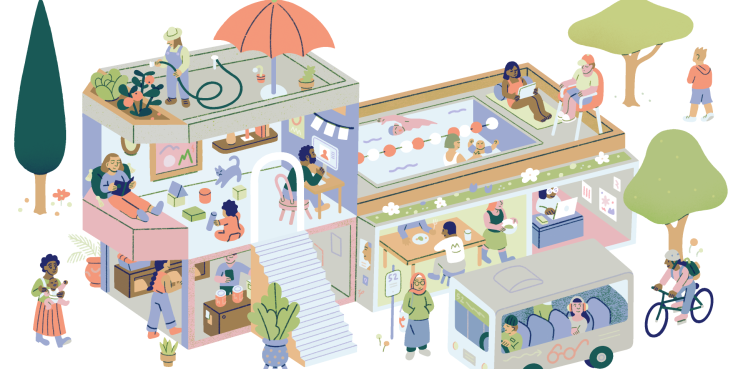This op-ed originally appeared in the Mercury News. Read SPUR’s 50-year vision for the Bay Area at spur.org/regionalstrategy.
With the pandemic lifting and California re-opening, now is the time to commit to overcoming the challenges that we have long faced as a region, made worse over the past year.
The cost of housing continues to soar, more of our neighbors are experiencing homelessness, and yet we continue to build far less housing than we need. Our climate crisis continues to trigger wildfire seasons that start earlier every year.
Traffic on our main regional arteries is already back up to pre-pandemic levels, yet we continue to design our cities around cars and create jobs without homes and far away from transit. Low-income communities and communities of color continue to face increasing economic insecurity, even as California sees an astonishing budget surplus.
If we really want to make progress on our most persistent problems, we need a bold vision, a long-term strategy and solutions of a similar scale to the problems themselves. This strategy, even if begun now, will likely take years to fully implement. It’s time to start building the thriving, equitable Bay Area of 2070.
First and foremost, our region needs to address the high cost of housing, which is at the root of so many of its challenges. We must treat housing as a human right, ensuring everyone can find an affordable place to live. This means building 2.2 million new housing units, protecting communities from displacement, and creating opportunities for people from all walks of life to live in every Bay Area neighborhood.
Second, we must view growth as an opportunity. The Bay Area is expected to grow by 4 million people and 2 million jobs over the next 50 years. To harness growth for good, we must grow where our roots are already planted. That means building jobs and housing around existing transit and commercial corridors — not in open spaces, agricultural land or areas prone to wildfires and flooding.
Third, we must close the Bay Area’s wealth and well-being gap, which has been allowed to fester for too long. This will take aggressive investment in basic services and public assistance, which empower upward mobility for all communities. It also means re-envisioning California’s tax system. As it stands, California’s property taxes are capped — forcing cities and counties to rely on increasing regressive sales taxes, putting an unfair burden on working people.
Fourth, we must protect our communities from the impacts of climate change — a crisis we are reminded of many times each year. This will take the elimination of the use of fossil fuels, using nature-based solutions to make our region resilient to natural disasters, and treating our Bay-Delta ecosystem as a national treasure.
Lastly, we must create a modern transportation system. The Bay Area’s disconnected, under-resourced public transit system will continue to be an Achilles heel unless we completely re-envision what it can be. This means creating a seamless transit network, with coordinated governance, and ensuring we provide equal mobility to every community.
These five elements of this long-term vision are intersectional — and no one piece will succeed without the other four. It’s this holistic vision that will deliver us a Bay Area that promotes equity, sustainability and progress.
Many of us may not see the Bay Area of 2070 in person. But if we act boldly together now and unite around a 50-year vision, we can leave a thriving region for our children. And that’s more than reason enough to fight for it today.
